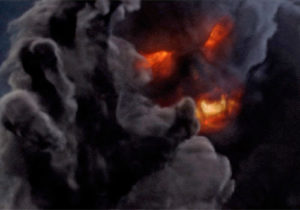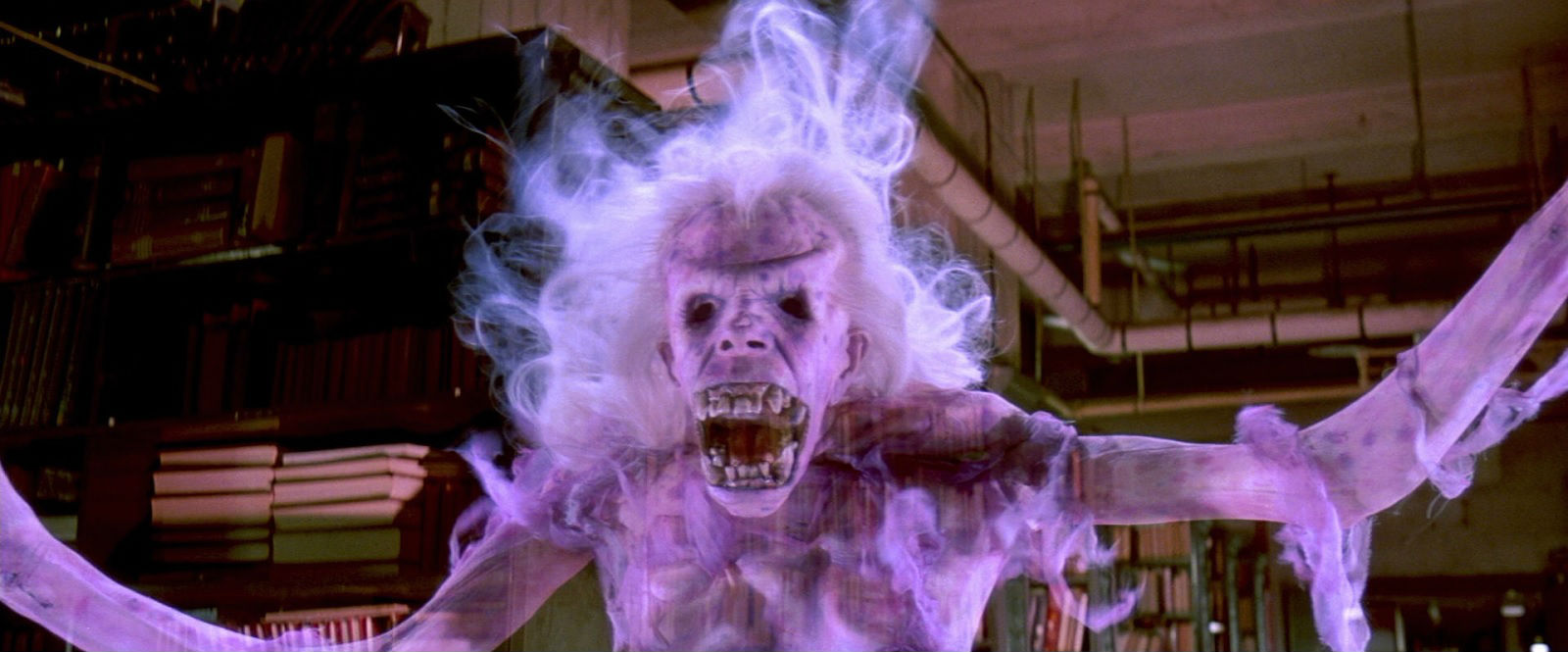Making Undead Scarier Part 1: Incorporeal Undead: Ghosts, Shadows, Wraiths, & More
Ghosts. Shadows. Spectres. Wraiths. These incorporeal undead (and many more) are common threats found in many types of RPG games. Unfortunately, it’s far too easy for the GM to roleplay them in a simplistic manner, as simple monsters to vanquish, giving them no backstory or interest, and an opportunity for world building is lost. But by knowing their abilities and distinctions, as well as giving them additional powers, they can be the threats they are truly meant to be.
Incorporeal creatures are insubstantial, having no physical body, thus have no weight and make no sound as they pass. They’re unable to be physically held or effected in any way, nor are they able to do so to physical foes. This including setting off traps, physical barriers, surrounded by environmental hazards, or falling. Some can even fly. Many incorporeal creatures are only visible when they want to be, while others are visible all the time. In many games systems, they occupy another plane of existence parallel to the one the PCs inhabit called the Ethereal Plane though this is not necessarily so, due to different game physics.
As such, they only able to be harmed by other such creatures or creatures whose touch affect them as magic; magic, magic weapons, and supernatural abilities. Unfortunately, whether magic damages or affects them is pure luck, and dependent on the system. However, there are a usually a select few that will do so.
Just because an incorporeal creature has no physicality, doesn’t mean it can’t affect the physical world, they just need to use telekinesis to do so. Some are just better at doing so than others.
An incorporeal creature’s touch or weapons are able to affect both incorporeal and corporeal targets, typically ignoring all armor, though magic armor and spells of protection usually work just fine against their attacks. Anything they carry with them is also incorporeal and works as per normal, including magic items. Likewise, any skills or abilities it has by the system are mostly unaffected except interaction with physical objects.
When merged with objects, they can’t be hit, but neither can they see. However, that’s really not a problem as they can sense the presence of creatures or objects nearby. In order to attack, it must emerge, where enemies outside can attack if readied.
Combat against incorporeal creatures is a multi-dimensional affair, with them going over (for the ones that can fly) and under enemies into the solid floor, into walls, and columns. Since they can’t fall, they can stand on walls or ceilings and attack. They can fade in and out of existence at will, blinking out of existence with but a thought.
Ghosts are the souls or spirits of dead people or animals that can appear to the living. Some lore suggests that they can even take over a living person’s body, as what happened in the movie Ghost. Most of the folklore surrounding ghosts state that they are created from the death of a person or animal that still has unfinished business. Depending on the lore involved, many ghosts are bound to a specific location, though this doesn’t necessarily be so. Many times ghosts will be able to cross over into the afterlife if whatever unfinished business they had is completed. But some are unwilling (or unable) to communicate what that is. It’s up to the PCs to piece together the mystery and solve it once and for all. If whatever unfinished task isn’t put to rest, the ghost will simply reform after being vanquished and continue their haunting.
According to Irish folklore, a Banshee is a type of a hideous female ghost whose keening foretells a person’s death. This hag is typically depicted as having long, disheveled hair and wearing red or green clothing.
Poltergeists, are a mischievous subtype of ghost or other supernatural entity which is responsible for physical disturbances, such as spooky sounds (groaning, knocking on doors), levitating and/ or destroying objects, and people being pinched, bit, hit, or tripped. They’re the masters at physical manipulation and will use this ability to their utmost advantage to wreak havoc.
 Shadows are sentient incorporeal creature of darkness, whose touch saps the strength of living creatures and, if the living creatures are afflicted for long enough, they can turn into a shadow themselves. Some varieties may also induce paralysis and numbness, idiocy, madness, or cause an unnerving deadening of the victim’s personality, as well as being able to hide themselves particularly well, stretch themselves, flicker in and out of existence, or carry diseases in addition to or as a replacement for the strength sapping abilities.
Shadows are sentient incorporeal creature of darkness, whose touch saps the strength of living creatures and, if the living creatures are afflicted for long enough, they can turn into a shadow themselves. Some varieties may also induce paralysis and numbness, idiocy, madness, or cause an unnerving deadening of the victim’s personality, as well as being able to hide themselves particularly well, stretch themselves, flicker in and out of existence, or carry diseases in addition to or as a replacement for the strength sapping abilities.
Spectres are similar to ghosts in that they appear as they did in life, but with the evidence of a violent death, but also similar in many ways to shadows in that they drain the life out of their victims and can make spawn out of them. But they also have the sunlight weakness of wraiths.
Wraiths are similar to shadows in that they can create spawn, but unlike shadows are powerless in daylight. Animals are uncomfortable around their presence. Larger sized ones are called Dread Wraiths. Artwork usually depict wraiths as wispy cloaked figured.
Here’s another author’s neat ideas as to how to play them more effectively: http://www.anarchydice.com/2016/08/20/the-art-of-being-a-monster-poltergeist/
D12 Ways of making incorporeal undead more powerful…
- Make them alive: the undead threat is a caused by a person’s unconscious or someone who astral traveled and got lost enroute back to their body
- Give them a quasi-elemental quality to them: pick one of the following: fire, water, air, earth, electricity, or other elemental quality and incorporate into the powers
- Make them immune (or highly resistant) to clerical powers. In D&D clerics can turn undead, causing them to flee, or at times, outright destroying them.
- Have them appear to be something else so that the PCs waste precious time and resources to no avail. But to be fair, let them know what’s ineffective.
- Have them alter the PC’s senses. In the Shining, and Paranorman, ghosts altered the character’s perceptions, often invading it in disturbing ways.
- Give them the ability to invade the character’s dreams. In the classic horror series ‘A Nightmare on Elm Street,’ Freddy Krueger gave his victims nightmares.
- Have them use (or be transported) via technology: On the Cooking Channel, there was a food based sculpture of death emailing himself to his victim and emerging from the tablet. In the classic movie, The Ring, the characters are affected by a video tape.
- Examine other cultures monsters. Examine Japanese monsters, called yokai here: http://yokai.com/
- Have them seem innocuous: Classic ways of contacting spirits are through mediums, the Ouija board, and staring into a mirror. Perhaps these “classic” methods of contacting ghosts holds a sinister truth.
- Have them connected to everyday objects. In the movie Oculus, the ghosts is connected to an antique mirror. In Child’s play, the spirit inhabits a child’s doll.
- Have it affect the PCs loved ones. A close relative, an old friend or lover.
- Have it based on a curse that the PCs have to track down and break.
Now you know more about incorporeal creatures, their lore, powers, and potential ways of making them more powerful, there’s no excuse to ever run another boring encounter with them again.
You can check out Part 2 of this series at my blog. Then, check back here for Part 3 in a few days!



I like this series and will be following your blog if you’ll keep posting monster empowerment tables like that one. Also, thanks for the mentions!
The 2nd series, hosted on my blog has such a table.